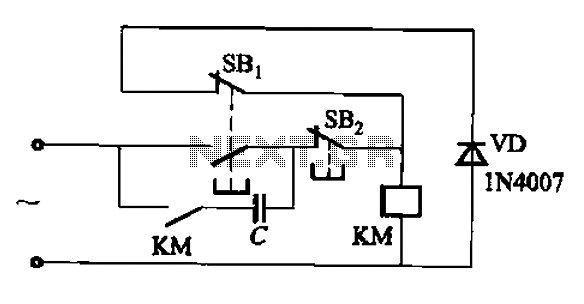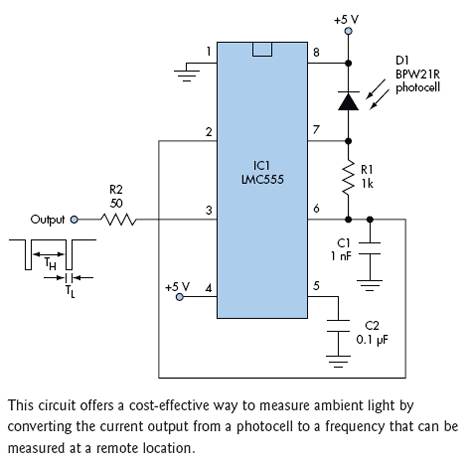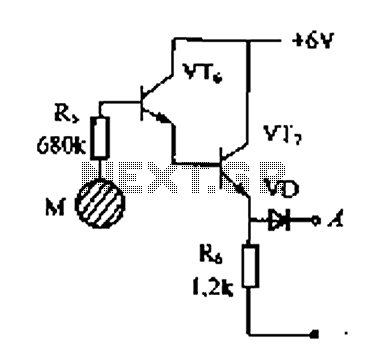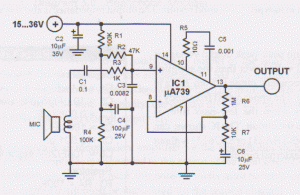
Improved Cmos Multivibrator Circuit
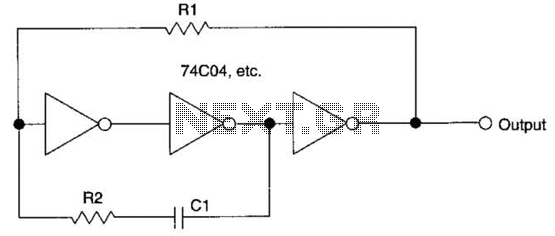
This circuit employs a protective resistor R2 along with a feedback resistor R1. Together, these components create a voltage divider that lowers the input voltage amplitude for IC1-a, ensuring that the protective diodes remain inactive. This arrangement enhances the temperature and voltage stability of the multivibrator.
The circuit utilizes a voltage divider configuration formed by resistors R1 and R2. The primary function of this voltage divider is to scale down the input voltage supplied to the operational amplifier or multivibrator IC (IC1-a). By carefully selecting the values of R1 and R2, the designer can ensure that the voltage at the input of IC1-a remains within safe operating limits, preventing the protective diodes from conducting. This is crucial, as diode conduction could lead to undesirable circuit behavior or damage.
The inclusion of resistor R2 serves a dual purpose. Not only does it provide protection by limiting the input voltage, but it also plays a role in the feedback mechanism of the circuit. The feedback resistor R1 works in conjunction with R2 to set the gain of the multivibrator, thereby influencing its oscillation frequency and stability characteristics.
In terms of thermal performance, the circuit's design mitigates the effects of temperature variations on the operational parameters of IC1-a. By maintaining a stable input voltage, the multivibrator can operate consistently across a range of temperatures, which is essential for applications requiring reliable performance.
Overall, the combination of R1 and R2 as a voltage divider enhances the robustness of the multivibrator circuit, ensuring that it functions effectively while safeguarding against potential voltage spikes or thermal fluctuations. This careful design consideration is vital for applications where precision and reliability are paramount. This circuit uses a protective resistor R2 in conjunction with feedback resistor Rl. Together, they form a voltage divider to reduce the input voltage amplitude for ICl-a so that the protective diodes never conduct. This improves temperature and voltage stability of the multivibrator.
The circuit utilizes a voltage divider configuration formed by resistors R1 and R2. The primary function of this voltage divider is to scale down the input voltage supplied to the operational amplifier or multivibrator IC (IC1-a). By carefully selecting the values of R1 and R2, the designer can ensure that the voltage at the input of IC1-a remains within safe operating limits, preventing the protective diodes from conducting. This is crucial, as diode conduction could lead to undesirable circuit behavior or damage.
The inclusion of resistor R2 serves a dual purpose. Not only does it provide protection by limiting the input voltage, but it also plays a role in the feedback mechanism of the circuit. The feedback resistor R1 works in conjunction with R2 to set the gain of the multivibrator, thereby influencing its oscillation frequency and stability characteristics.
In terms of thermal performance, the circuit's design mitigates the effects of temperature variations on the operational parameters of IC1-a. By maintaining a stable input voltage, the multivibrator can operate consistently across a range of temperatures, which is essential for applications requiring reliable performance.
Overall, the combination of R1 and R2 as a voltage divider enhances the robustness of the multivibrator circuit, ensuring that it functions effectively while safeguarding against potential voltage spikes or thermal fluctuations. This careful design consideration is vital for applications where precision and reliability are paramount. This circuit uses a protective resistor R2 in conjunction with feedback resistor Rl. Together, they form a voltage divider to reduce the input voltage amplitude for ICl-a so that the protective diodes never conduct. This improves temperature and voltage stability of the multivibrator.
